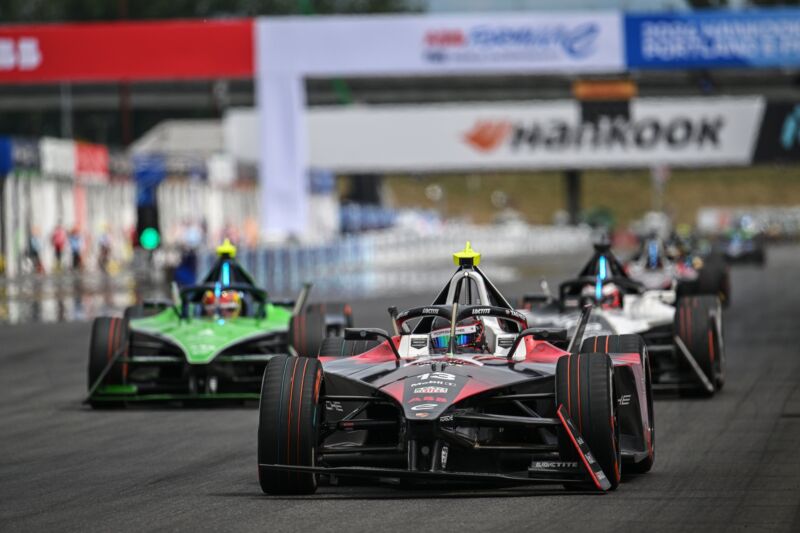Formula E wraps its 10th season this weekend—what’s next for the sport?

Enlarge / Antonio Felix da Costa leads the way into turn one at Portland International Raceway. (credit: Sam Bagnall/Formula E)
PORTLAND, Ore.—Formula E wraps up its 10th series with a pair of races in London this weekend. It’s been a competitive manufacturer’s championship between Porsche and Jaguar. This weekend, seven drivers are still in contention to win the driver’s title after a double-header in Portland on June 29-30 that saw cars going five-wide down the main straight as they reached the highest top speeds of the season. It was the second visit by Formula E to the picturesque Portland International Raceway, and Ars spoke with some of the sport’s bigwigs to see what they think it’s getting right and where the technical evolution of the cars is headed.
Formula E has come a long way since 2014. Racing then exclusively in city centers, the cars were slow at first. And even as they developed, they carried too small a battery to complete even a relatively short race distance. There was a big upgrade in 2018 with the start of season five: The Gen2 car now has battery packs sufficient for 45 minutes-plus-a-lap races. The Gen2 car raced well, too, even putting on a better show at Monaco than Formula 1 has been able to muster for decades.
We expected another big improvement in lap times when the Gen3 car arrived at the start of last season. The Gen3 car featured much less weight and much more power, but also a change of tire supplier. Originally meant to last multiple race weekends, the rubber supplied by Hankook this season and last has much less grip than the Michelins it replaced. That’s kept cornering speeds relatively low and made the cars even harder to drive.
This post has been read 164 times!
